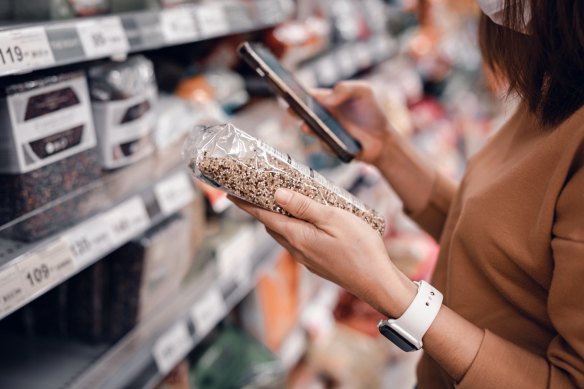By Shane Wright
The Reserve Bank has for months been looking for clear evidence that it is winning the war on inflation.
On Wednesday, it got that evidence – much to the relief of families, business owners and those struggling to find affordable rental accommodation.

Shoppers are looking for bargains and winding back spending, aiding the Reserve Bank’s efforts to slow inflation.Credit: iStock
The June quarter inflation data was always going to be important to the bank. Thirteen months after it started lifting interest rates, it had to see some sign that all that monetary policy action was really starting to work.
On numerous counts, those signs were delivered in spades. The headline rate, at 6 per cent, was below market expectations and well short of the bank’s own forecasts of a 6.3 per cent annual rate.
Both measures of underlying inflation were under 6 per cent. Measures of inflation for discretionary spending were lower than the headline rate. Even the volatile monthly measure of inflation, also released on Wednesday, continued to slip and now sits at 5.4 per cent.
Yes, some goods are still going up. Australians can’t live on bread alone – they can’t afford to, with the price of a loaf climbing by a record-breaking 14 per cent over the past year.
Insurance, for reasons way outside the control of the central bank, is climbing at its fastest pace since the introduction of the GST. In Brisbane alone, the cost of insuring a home, its contents or a vehicle has shot up by 17.1 per cent since July 2022.
The Reserve Bank has been worried about price pressures for services. The annual rate revealed in the data showed this climbing to 6.3 per cent.
But that is misleading. Quarter by quarter, services inflation is slowing – it jumped by 2.1 per cent in the final three months of 2022, edged down to a 1.7 per cent increase in March while the June quarter showed a 0.8 per cent result.
The slowdown in inflation here follows better-than-expected inflation figures in the United States, Canada, the eurozone and Britain over the past week. Just as prices around the world skyrocketed through 2022, they are now easing this year.
Inflation is still too high. Wages are falling in real terms.
But from the RBA’s perspective, the most important aspect is that inflation is coming down before the full impact of its previous rate rises have filtered through the economy. Its most recent rise, in June, won’t have fully worked its economic magic until the second half of next year.
There’s another 300,000 to 400,000 households whose cheap fixed rate mortgages will rollover to much higher repayments in coming months.
The impact of the war in Ukraine is starting to wane on domestic inflation. Prices for edible oils and fats (things like sunflower oil) climbed by almost 21 per cent through 2022, but the annual rate has now edged down to 14.6 per cent and will fall much further in coming months.
The fallout from China’s COVID-related supply chain problems that helped push up prices around the world is also ebbing.
Car prices, for instance, dropped in the quarter for the first time since the early stages of the pandemic. That trend still has a long way to run.
The Reserve has been upfront that it has decided to trade off a steep fall in inflation (which would require much higher interest rates) against maintaining the huge gains made in the jobs market where unemployment remains at 3.6 per cent.

Car prices fell for the first time since early in the COVID pandemic, a sign that supply issues are finally being resolved.Credit: Rob Homer
That’s why its most recent forecasts have inflation not reaching the top of its 2-3 per cent target band until mid-2025.
These new figures, however, suggest there is a real chance inflation could be lower, sooner than expected. Justifying a further increase in interest rates in the wake of these figures is now exceptionally difficult.
Cut through the noise of federal politics with news, views and expert analysis. Subscribers can sign up to our weekly Inside Politics newsletter here.